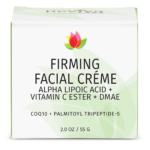Squalane
Squalane is a hydrocarbon derived by hydrogenation of squalene. In contrast to squalene, due to the complete saturation of squalane, it is not subject to auto-oxidation. This fact, coupled with lower costs associated with squalane, make it desirable in cosmetics manufacturing, where it is used as an emollient and moisturizer.
Squalane is a hydrocarbon derived by hydrogenation of squalene. In contrast to squalene, due to the complete saturation of squalane, it is not subject to auto-oxidation. This fact, coupled with lower costs associated with squalane, make it desirable in cosmetics manufacturing, where it is used as an emollient and moisturizer. The hydrogenation of squalene to produce squalane was first reported in 1916.
| Names | |
|---|---|
| Preferred IUPAC name
2,6,10,15,19,23-Hexamethyltetracosane | |
| Other names
Perhydrosqualene; Dodecahydrosqualene
| |
| Identifiers | |
3D model (JSmol)
|
|
| 776019 | |
| ChemSpider | |
| ECHA InfoCard | 100.003.478 |
| EC Number |
|
| KEGG | |
| MeSH | squalane |
PubChem CID
|
|
| RTECS number |
|
| UNII | |
CompTox Dashboard (EPA)
|
|
| |
| |
| Properties | |
| C30H62 | |
| Molar mass | 422.826 g·mol−1 |
| Appearance | Colorless liquid |
| Odor | Odorless |
| Density | 810 mg/mL |
| Melting point | −38 °C (−36 °F; 235 K) |
| Boiling point | 176 °C (349 °F; 449 K) at 7 Pa |
Refractive index (nD)
|
1.452 |
| Viscosity | 31.123 mPa·s |
| Thermochemistry | |
Heat capacity (C)
|
886.36 J/(K·mol) |
Std enthalpy of
formation (ΔfH⦵298) |
−871.1...−858.3 kJ/mol |
Std enthalpy of
combustion (ΔcH⦵298) |
−19.8062...−19.7964 MJ/mol |
| Hazards | |
| GHS labelling: | |

| |
| Warning | |
| H315, H319, H335 | |
| P261, P305+P351+P338 | |
| Flash point | 218 °C (424 °F; 491 K) |
| Related compounds | |
Related alkanes
|
Phytane |
Except where otherwise noted, data are given for materials in their standard state (at 25 °C [77 °F], 100 kPa).
| |
In basic research, squalane is used as a reference liquid in tribology.









